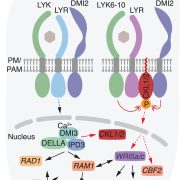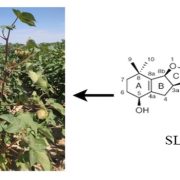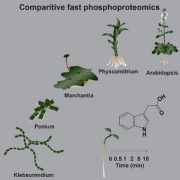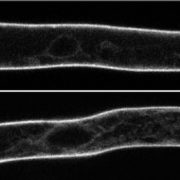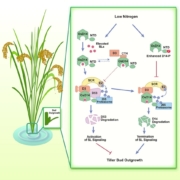SMXL proteins repress moss growth through a conserved ancestral signaling pathway
Guillory et al. explore the role of SMXL proteins in Physcomitrium patens growth.
https://doi.org/10.1093/plcell/koae009
By Ambre Guillory, Sandrine Bonhomme and Catherine Rameau
Background: In flowering plants, several proteins of the SUPPRESSOR OF MAX2 1-LIKE (SMXL) family influence the signaling pathways of the phytohormone strigolactone (SL) and the elusive KAI2 Ligand (KL). These proteins repress SL and KL signaling and are targeted by the MORE AXILLARY GROWTH 2 (MAX2) F-box protein for degradation. In the moss Physcomitrium patens, SL and KL signaling regulates development: SLs repress filament growth and branching while promoting leafy shoot development, whereas KL triggers the opposite effects. The PpMAX2 homolog regulates KL signaling in moss but does not impact SL signaling.
Question: Four PpSMXL genes are present in the P. patens genome (PpSMXLA–D). Are they involved in moss phytohormone signaling? Do they mediate repression of the SL and KL signaling pathways, like in flowering plants?
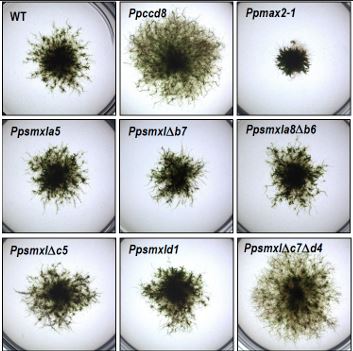 Findings: We obtained several P. patens mutants in PpSMXL genes, including higher-order mutants, by clustered regularly interspaced short palindromic repeat (CRISPR)/CRISPR-associated nuclease 9 (Cas9)-mediated mutagenesis. The Ppsmxlab double mutant has no obvious defects, but the Ppsmxlcd mutant exhibits increased filament growth compared to wild type, similar to a SL-deficient mutant. The Ppsmxlab and Ppsmxlcd double mutations in the KL-insensitive Ppmax2-1 background partially complement the Ppmax2-1 phenotype. Thus, PpSMXL proteins may collectively repress KL signaling. This hypothesis is supported by the observation that PpSMXL-overexpressing lines develop similarly to the Ppmax2-1 mutant and by the reduced sensitivity of Ppsmxlcd mutants to a KL mimic. PpSMXLCD might promote SL responses, as Ppsmxlcd mutants are also largely insensitive to an SL mimic.
Findings: We obtained several P. patens mutants in PpSMXL genes, including higher-order mutants, by clustered regularly interspaced short palindromic repeat (CRISPR)/CRISPR-associated nuclease 9 (Cas9)-mediated mutagenesis. The Ppsmxlab double mutant has no obvious defects, but the Ppsmxlcd mutant exhibits increased filament growth compared to wild type, similar to a SL-deficient mutant. The Ppsmxlab and Ppsmxlcd double mutations in the KL-insensitive Ppmax2-1 background partially complement the Ppmax2-1 phenotype. Thus, PpSMXL proteins may collectively repress KL signaling. This hypothesis is supported by the observation that PpSMXL-overexpressing lines develop similarly to the Ppmax2-1 mutant and by the reduced sensitivity of Ppsmxlcd mutants to a KL mimic. PpSMXLCD might promote SL responses, as Ppsmxlcd mutants are also largely insensitive to an SL mimic.
Next steps: The mechanism of action of PpSMXL proteins in KL signaling resembles that in flowering plants and in non-vascular plants such as liverworts of the Marchantia genus. In contrast, PpSMXLCD function in SL signaling may be specific to mosses, a possibility that warrants further study.
Reference:
Ambre Guillory, Mauricio Lopez-Obando, Khalissa Bouchenine, Philippe Le Bris, Alain Lécureuil, Jean-Paul Pillot, Vincent Steinmetz, François-Didier Boyer, Catherine Rameau, Alexandre de Saint Germain, Sandrine Bonhomme. (2024). SUPPRESSOR OF MAX2 1-LIKE (SMXL) homologs are MAX2-dependent repressors of Physcomitrium patens growth. https://doi.org/10.1093/plcell/koae009



